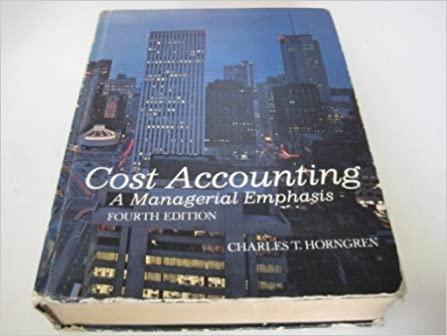Pricing in Imperfect Markets Refer to Problem 22-21. 1. Suppose the manager of A has the option
Question:
Pricing in Imperfect Markets Refer to Problem 22-21.
1. Suppose the manager of A has the option of
(a) cutting the external price to $195 with the certainty that sales will rise to 1,000 units or
(b) maintaining the outside price of $200 for the 800 units and transferring the 200 units to B at some price that would produce the same income for A. What transfer price would produce the same income for A? Does that price coincide with that produced by the “general rule” in the chapter so that the desirable decision for the company as a whole would ensue?
2. Suppose that if the selling price for the intermediate product is dropped to
$195, outside sales can be increased to 900 units. Division B wants to acquire as many as 200 units if the transfer price is acceptable. For simplicity assume that there is absolutely no outside market for the final 100 units of Division A capacity.
a. Using the “general rule,” what is (are) the relevant transfer price(s)
that should lead to the correct economic decision? Ignore performance evaluation (incentive) considerations.
b. Compare the total contributions under the alternatives to show why the transfer price(s) recommended lead(s) to the optimal economic decision. lop1
Step by Step Answer:






